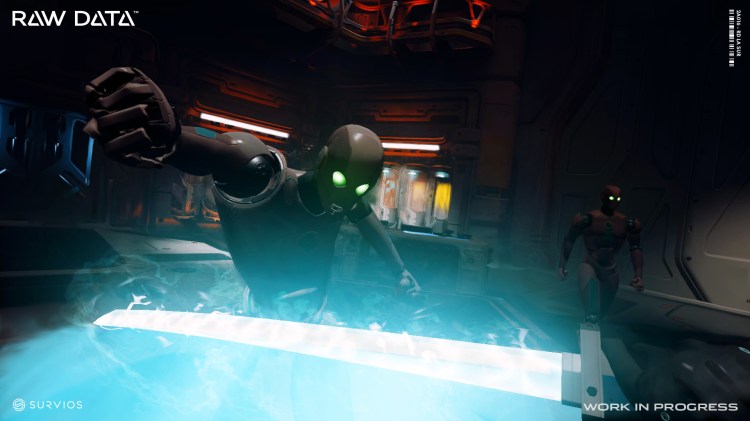I didn’t feel quite right after playing Raw Data.
GamesBeat’s E3 2016 Non-award Awards
Last week’s Electronic Entertainment Expo in Los Angeles is behind us, but we still have all these trophies labeled “non-awards” to hand out. Each year after E3, GamesBeat showers accolades on the fun and weird games, people, and moments that others ignore.
Join us now for the GamesBeat E3 2016 Non-award Awards! (Here are last year’s choices).
While I was interviewing some of the people behind the action-packed virtual reality game, I couldn’t help but look down at my hands and feet — and realizing that they didn’t feel like my hands and feet at all. I know how silly that sounds, but bear with me. Raw Data brought about this strange out-of-body experience that I’ve never had before.
The weird thing is that it wasn’t my first time in VR. I’ve played Oculus Rift a lot at various press events over the years, and I sometimes use my Samsung Gear VR at home. The biggest difference in my Raw Data demo was that it was the first time I played around with the HTC Vive and its room-scale technology, which among other things, allows you to walk around a small space (depending on the size of your room) in the virtual world.
In Raw Data (coming to PC for the Vive headset later this year), you use the Vive’s motion-tracking controllers to grab your weapons by holding buttons that rest near your middle fingers. If you let go of this button, you actually drop your guns, swords, or whatever else you’re wielding at the time. So the game has a real tactile layer to it. After playing about 40 minutes, I took off the headset, sat down on a couch, and started to talk to the developers from Survios.
It was in the middle of that conversation that the disconnect between my brain and my limbs dawned on me. And it freaked me out.
One of the guys from Survios told me psychologists call it “disassociation,” and another later said he was wondering why I looked a little shell-shocked. The feeling passed after one or two minutes. But it must’ve lingered around in my brain, because it came back a few hours later after I played a different VR demo.
At Sony’s press booth, I tried Farpoint for PlayStation VR. Unlike the Vive, PSVR doesn’t have the extra room-scale sensors — instead of walking with my legs, I used an analog stick to move my character. But the sci-fi shooter was still strong enough (immersive enough?) to trigger the same dissociative feelings.
Like before, it hit me out of nowhere. I was listening to a colleague and sipping my hot tea when it happened. It was as if I was another person staring at someone else’s body and holding someone else’s tea. For a second there, the place I was in — the booth, the people around me, E3 itself — didn’t seem real.
It was so bizarre. I think these side effects highlight how wonderfully weird VR can be. It won’t take long before we’re unable to distinguish between the real world and the virtual world, and only then will we realize that VR was a mistake. We shouldn’t have brought it back! But at that point, our robot overlords will already be in control.
I hope Keanu Reeves will still be around to save us.
VentureBeat's mission is to be a digital town square for technical decision-makers to gain knowledge about transformative enterprise technology and transact. Learn More

